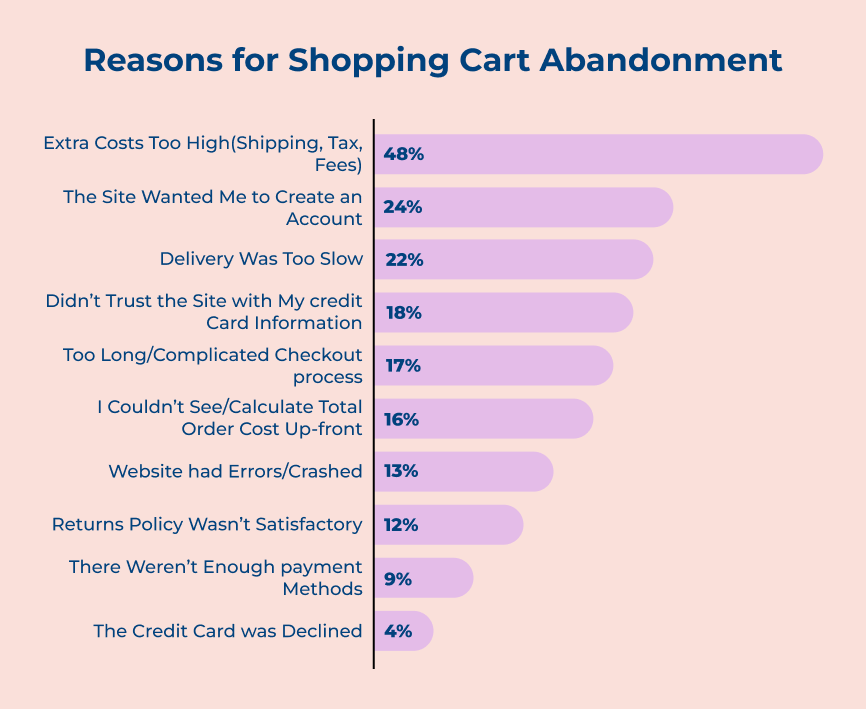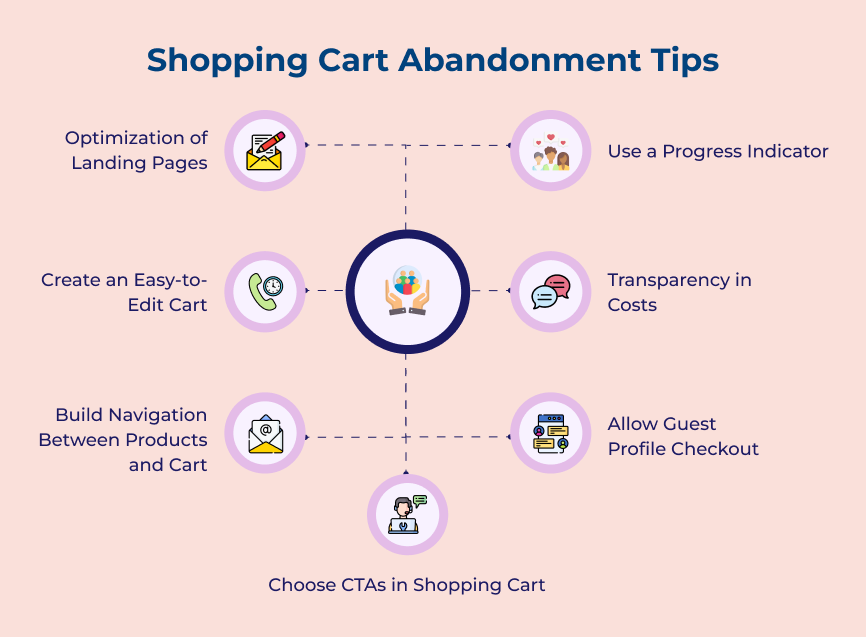1. Optimization of Landing Pages
Optimization of landing pages is a key strategy that can significantly reduce shopping cart abandonment rates. When potential customers visit your website, the landing page is their first point of contact with your brand. Optimizing the page can help create a seamless and engaging user experience that encourages visitors to complete their purchase.
A use case for the strategy is an online retailer that saw a decrease in its cart abandonment rate after implementing landing page optimizations. They were able to provide a more user-friendly experience, by simplifying the checkout process and improving page loading times. It results in higher conversion rates and increased sales.
Pro tips:
- Use clear and concise language to communicate your value proposition
- Implement responsive design to ensure a seamless experience across all devices
- Test different layouts and features to see what resonates best with your target audience.
2. Use a Progress Indicator
Progress indicators are an effective strategy in reducing cart abandonment rates on e-commerce websites. The indicators provide customers with a clear overview of how many steps are involved in the checkout process, giving them a sense of control.
Let’s assume that an online retailer XYZ saw a decrease in shopping cart abandonment rates after implementing progress indicators. Customers were more likely to proceed with their purchase when they could see how far they were in the checkout process.
Practical tips:
- Use visual cues such as progress bars or step numbers to guide customers through the checkout process.
- Remove unnecessary elements on the checkout page to keep the focus on the progress indicators.
- Continuously analyze data and make adjustments to the progress indicators to improve the user experience.
3. Create an Easy-to-Edit Cart
Creating an easy-to-edit cart is a crucial strategy for reducing cart abandonment rates. Allowing customers to easily make changes to their cart can provide a more seamless shopping experience. It encourages them to complete their purchases.
Let’s consider that a customer adds items to their cart and realizes they need to remove one item or adjust the quantity of another. They can quickly make those changes without having to navigate through multiple screens with an easy-to-edit cart. It makes the shopping experience more convenient and hassle-free.
How to implement it:
- Provide clear instructions on how to edit the cart and make changes easily accessible.
- Offer a visual representation of the cart with thumbnail images of the items for quick reference.
- Allow customers to save their cart for future sessions or share it with others for feedback, increasing engagement and potential conversions.
4. Transparency in Costs
Transparency in costs is a crucial strategy to reduce shopping cart abandonment rates. When customers have full visibility into the total costs, they are more likely to complete the transaction. The importance of the strategy lies in the fact that unexpected additional costs at the checkout stage can deter customers from making a purchase.
Let’s assume that a popular online clothing store saw a significant decrease in its cart abandonment rate after implementing transparent pricing on its website. They were able to provide a seamless experience for their customers, by displaying all costs associated with a purchase. It increased completed transactions.
Pro tips:
- Display all costs upfront before customers reach the checkout page.
- Offer free or discounted shipping to offset any additional costs.
- Provide detailed breakdowns of pricing to reassure customers of the value they are receiving.
5. Build Seamless Navigation Between Products and Cart
Having seamless navigation between products and the shopping cart is a crucial strategy to improve shopping cart abandonment rates. When customers have a smooth experience while adding items, they are more likely to complete their purchase without abandoning it midway.
Let’s consider that a popular online clothing store implemented a quick view for their products, allowing customers to add items without leaving the main page. It resulted in a decrease in cart abandonment rates and an increase in sales.
Best practices:
- Enable a visible and easily accessible cart icon on every page of your website.
- Provide clear product descriptions and images to help customers make informed purchase decisions.
- Implement a one-click checkout option to streamline the buying process and reduce friction for customers.
6. Allow Guest Profile Checkout
Allowing guest profile checkout is a strategy to reduce cart abandonment rates by streamlining checkout for customers who do not want to create an account. 34% of online shoppers abandon their carts because the online store required them to create an account. Instead of forcing customers to create an account to complete a purchase, the strategy allows them to checkout as a guest.
A use case for the strategy would be an online clothing store that offers guest profile checkout. Customers can easily add items to their cart and checkout without having to create an account. The simple process can lead to higher conversion rates and decreased cart abandonment.
Pro tips:
- Displaying the option to checkout as a guest on the checkout page.
- Streamlining the guest checkout option process by only asking for essential information.
- Offering the option to create an account after the transaction is complete for customers who may want to shop again in the future.
7. Choose CTAs in the Shopping Cart Effectively
Choosing effective call-to-action (CTAs) in the shopping cart is a crucial strategy to improve shopping cart abandonment rates. CTAs in the shopping cart prompt customers to take action and complete their purchase, thereby increasing conversion rates.
A use case for the strategy could involve implementing clear and enticing CTAs such as “Proceed to Checkout,” “Complete Purchase,” or “Secure Payment” buttons throughout the shopping cart page. The CTAs should be prominently displayed to catch the customer’s attention. It encourages them to take the next step in completing their purchase.
Pro tips:
- Keep CTAs simple and clear to avoid confusion.
- Use persuasive language to motivate customers to complete their purchases.
- A/B tests different CTAs to determine which ones are most effective in encouraging conversions.















